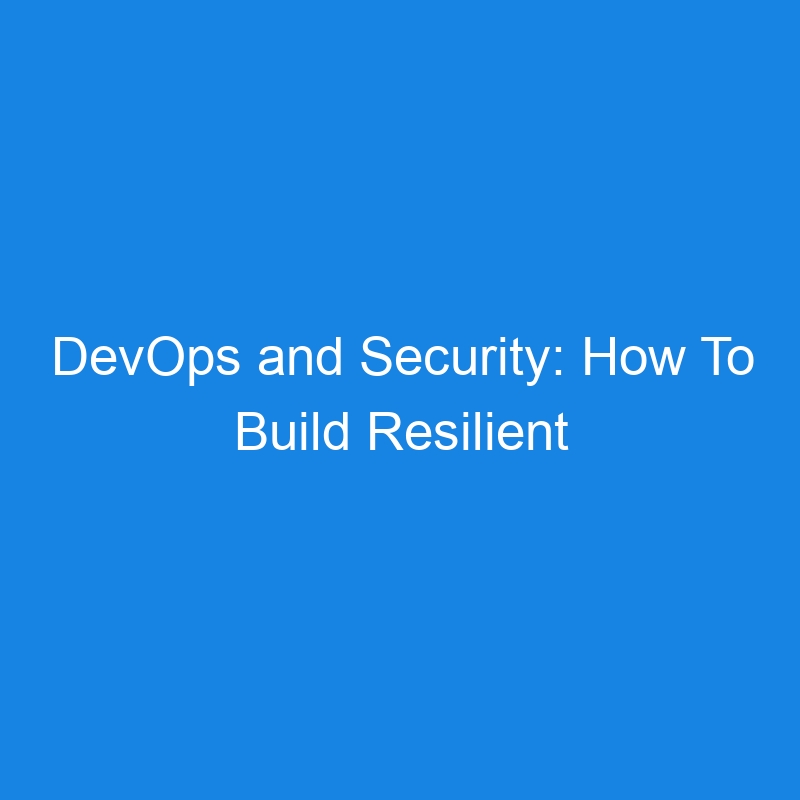
DevOps teams have mastered pipelines, containers, and Terraform to deliver applications faster and more efficiently, but security remains a critical blind spot. As software development infrastructure has grown complex, every pipeline stage is a potential minefield of insecure code and misconfigured cloud. It’s a matter of time before security risks translate into sensitive data breaches and delivery downtimes.
Convicted hacker-turned-consultant Kevin Mitnick proved the human factor has always been the weakest link in security. Rapid AI advancements are making secure DevOps more attainable than before, but AI is still a wild dog that needs skilled hands to guide it. Equally important as training and educating DevOps teams is mastering continuous security — the proactive protection of digital systems while staying ahead of emerging threats.
Where Does Continuous Security Fit into DevOps?
A DevOps cycle is repetitive — plan, review code, build, test, release, deploy, monitor, and repeat. Security measures should be applied at every step. On real projects, if DevOps engineers skip a manifest review during the planning stage, that oversight will lead to a critical data leak, with one of the variables mistakenly exposed publicly. Starting every Terraform cycle with an automated review using Terraform compliance is essential, saving time and preventing costly mistakes.
Continuous security must account for the human factor, which is a high risk even within experienced teams. For example, a junior engineer might accidentally upload an access token to a shared repository. DevOps could face secrets in repositories when automating pipelines — an issue that’s easy to overlook but could have a catastrophic impact. Tools like HashiCorp Vault and strict key rotation policies can help mitigate the risk.
Secure Code Writing and Storage
The cycle begins with writing and working with code, and security should be integrated from this initial stage. Teams should adopt shift left principles to promptly identify and fix security issues, contributing to a culture where security is everyone’s responsibility from the start of the project.
DevOps engineers should run various scans early in the software development process to identify frameworks and potential risks that may arise as work progresses. For example, developers might use outdated dependencies with known vulnerabilities. Integrating Dependabot and CodeQL into the DevOps workflow can help automate dependency checks, flagging and resolving issues before they slip into production.
Protect CI/CD Stage
A golden rule says never to store passwords in plain text in the repo. DevOps engineers should use tokens and always check the communication protocols between the application’s components.
It is best to store passwords, logins, and security strings in a secure and centralized location and rotate credentials regularly to prevent unauthorized access. A typical example is the insecure use of test environment API keys in production. The best security measure in such cases is storing sensitive information in cloud-based key vaults, like HashiCorp Vault and enforcing strict least privilege access policies. DevOps will inject passwords during the build process or, for example, into Kubernetes based on application requests. In addition, they will configure settings to restrict the production passwords. The principle of least privilege (PoPL, PoMP, or PoLA) is king here, alongside the OWASP Top Security Risks, which provides valuable information on securing DevOps pipelines.
Shield Post-Deployment Stage
The most extended phase, most extended maintenance, begins after deployment and often requires as much or more effort than development. Maintenance security ranges from user access and certificates to DDoS attacks and SQL injections. DevOps focuses on threat detection, user behavior analysis, and vulnerability assessment (already AI-aided).
After deploying a project, DevOps might notice anomalous system behavior. DarkTrace can help them identify attempts to exploit SQL injection vulnerabilities across all production environments. This is an example of a cornerstone security measure in the post-deployment security strategy.
DevOps increasingly rely on AI to respond to incidents and scan, detect, and fix infrastructure flaws. The following components are mandatory for scanning:
Kubernetes:
- K8sgpt finds and fixes issues, performs security audits, and trains its model for specific tasks.
- KoPilot quickly audits Kubernetes resources for known vulnerabilities and is ideal for understanding complex or inherited Kubernetes configurations.
- Kube-copilot helps less experienced team members by providing explanations and suggestions during the workflow.
SaaS:
- Spin.ai enhances cyber resilience, streamlines security operations, and protects SaaS data for mission-critical applications.
- IBM is a vast platform solution for addressing security concerns in any domain.
- ZAP offers active and passive scanning and add-on plugins.
VM:
- With human-assisted automation, Splunk provides comprehensive context and interpretation, rapid event detection, and greater productivity.
- Google’s Security Command Center offers threat detection through hypervisor-level instrumentation and persistent disk analysis.
- Palo Alto scans and predicts network behavior.
Deflecting Threats
Security in DevOps is as necessary for development stability as it is for project success. It is a thread running through the entire labyrinth of DevOps processes. AI and automation technology are the allies of DevOps engineers, helping them manage vulnerabilities faster and more accurately. In addition, engineers should cultivate a security-first mindset, ensuring proactive threat detection, minimized risks, and pipeline resilience throughout the development lifecycle.
The post DevOps and Security: How To Build Resilient Pipelines appeared first on The New Stack.
